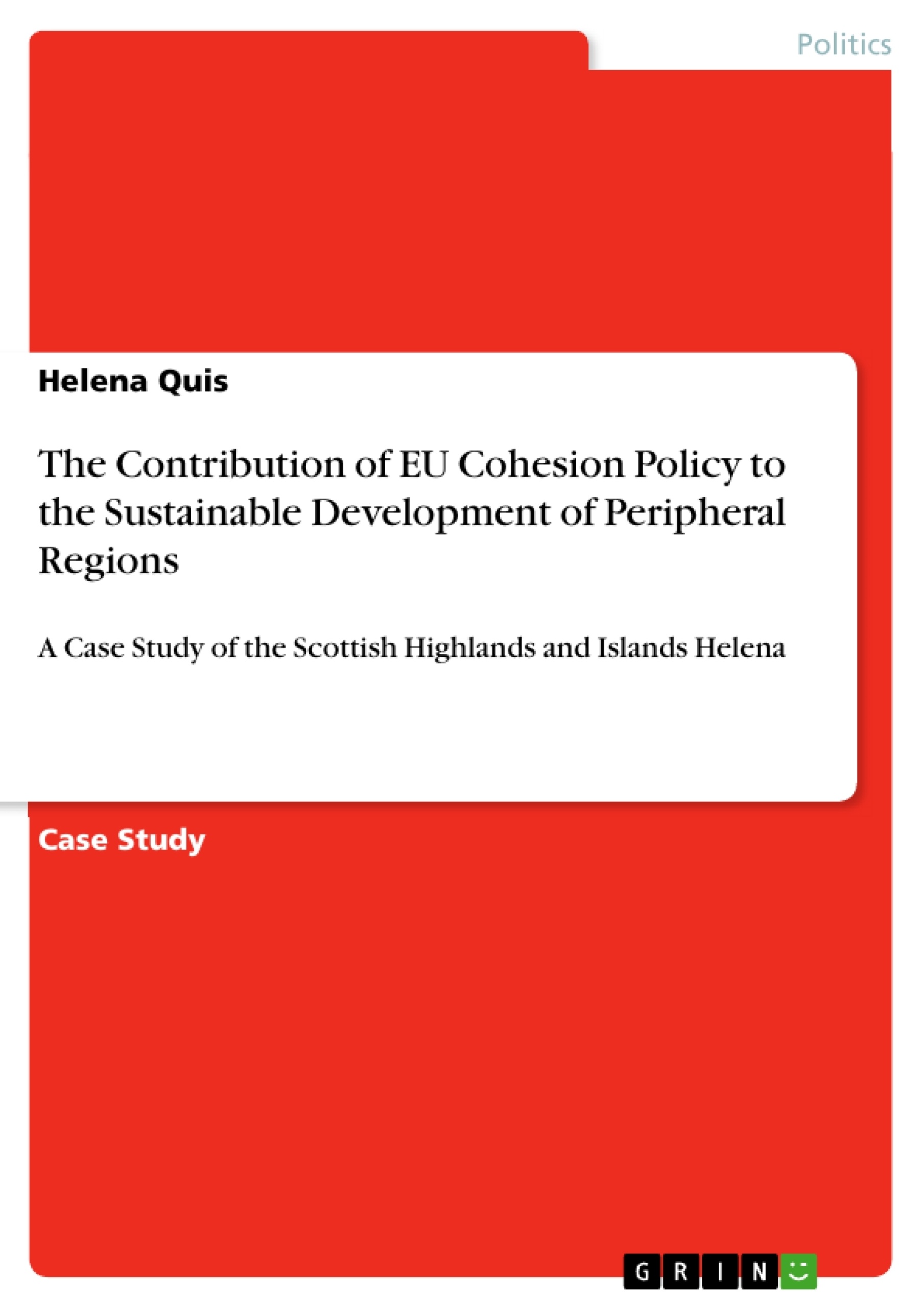Since the late 1980s, EU Cohesion Policy has been one of the most important EU policies. It is an attempt to reduce socio-economic disparities between and within EU member states and thus to make pan-European economic success more equitable. The main instruments for supporting less developed regions and countries are the European Structural Funds. Their impact has been the subject of numerous studies in recent decades. In most cases the socio-economic changes in a region can be identified relatively easy from figures and data. However, the aim of this paper is to focus on the qualitative effects of the Structural Funds on political structures, processes and actors and thus to conclude on the sustainability of their contribution to the development of a region, beyond the financial means. In the end, it is always a goal of regional development to overcome a region's dependence on subsidies.
The analysis in this paper focuses on the approach of multi-level governance as the modus operandi of EU Cohesion and Structural Policy. Taking the Scottish Highlands and Islands (H&I) as an example, the paper explores the extent to which the involvement of multiple political levels and a variety of different actors in the governance and implementation of Structural Funds programmes has influenced the success and sustainability of the region's economic and social development.
To come to the desired conclusion, the following chapters first give an overview of EU Cohesion Policy, describe the role of the Structural Funds and present the connection between the multi-level governance approach, the partnership principle and its consequences for less developed regions. The socio-economic problems of the H&I region, also referred to as the ‘Highland Problem’, are then described, as well as the previous social and economic development efforts. In particular, the Highlands and Islands Development Board (HIDB) and its successor, the Highlands and Islands Enterprise (HIE), laid important foundations for the later success of EU Structural Policy in the region. In the final part, the processes and contents of the individual EU funding periods are described and analysed regarding their impact on regional partnership structures, and a conclusion is drawn.
Table of Contents
- Introduction
- EU Cohesion Policy and multi-level governance
- Upgrading the regional level: the partnership principle
- Europeanisation of regional policy: regional adjustment processes
- The Scottish Highlands and Islands a lost cause?
- New attempts to solve the 'Highland Problem'
- EU Cohesion Policy in the Highlands and Islands
- Early programme periods – mobilization of subnational actors
- Maturity phase – expansion of partnership structures
- Reduction of financial resources - the viability of partnership structures put to the test
- Conclusion
Objectives and Key Themes
This paper examines the impact of EU Cohesion Policy on the sustainable development of peripheral regions, focusing on the qualitative effects of Structural Funds on political structures, processes and actors. It aims to assess whether the partnership structures established through EU funding contribute to a region's long-term development beyond financial support, using the Scottish Highlands and Islands (H&I) as a case study.
- The role of multi-level governance and the partnership principle in EU Cohesion Policy
- The impact of Structural Funds on regional development, beyond financial aid
- The influence of EU funding on political structures, processes and actors in the H&I
- The sustainability of partnership structures in the H&I region
- The challenges and opportunities for regional development in the context of reduced financial resources
Chapter Summaries
- Introduction: This chapter introduces the concept of EU Cohesion Policy and its objectives, focusing on the qualitative impact of Structural Funds on regional development. It introduces the case study of the Scottish Highlands and Islands and outlines the research approach.
- EU Cohesion Policy and multi-level governance: This chapter provides an overview of EU Cohesion Policy and its link to the concept of multi-level governance. It examines the role of the partnership principle in involving subnational actors in decision-making and implementation of Structural Funds. The chapter also discusses the Europeanisation of regional policy and the influence of EU funding on regional governance structures.
- The Scottish Highlands and Islands a lost cause?: This chapter explores the socio-economic challenges facing the H&I region and discusses previous efforts to address them. It introduces the Highlands and Islands Development Board (HIDB) and its successor, the Highlands and Islands Enterprise (HIE), as key institutions involved in regional development.
- New attempts to solve the 'Highland Problem': This chapter delves into the early stages of EU Cohesion Policy implementation in the H&I region, examining the mobilization of subnational actors and the expansion of partnership structures during the maturity phase of EU funding. The chapter discusses the impact of these initiatives on regional development and governance.
Keywords
The paper focuses on EU Cohesion Policy, multi-level governance, regional development, sustainable development, partnership principle, Structural Funds, Europeanisation, Scottish Highlands and Islands, Highlands and Islands Development Board, Highlands and Islands Enterprise, regional adjustment processes, qualitative effects, partnership structures.
- Arbeit zitieren
- Helena Quis (Autor:in), 2021, The Contribution of EU Cohesion Policy to the Sustainable Development of Peripheral Regions, München, GRIN Verlag, https://www.grin.com/document/1185152



